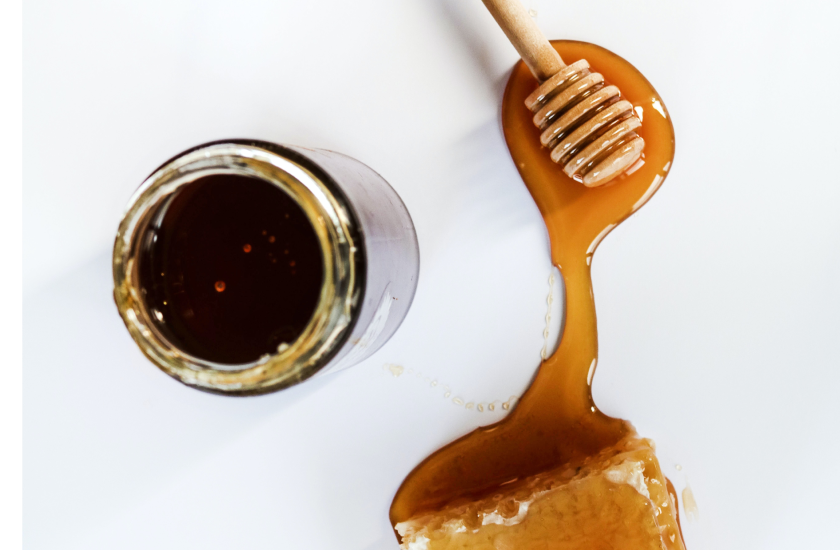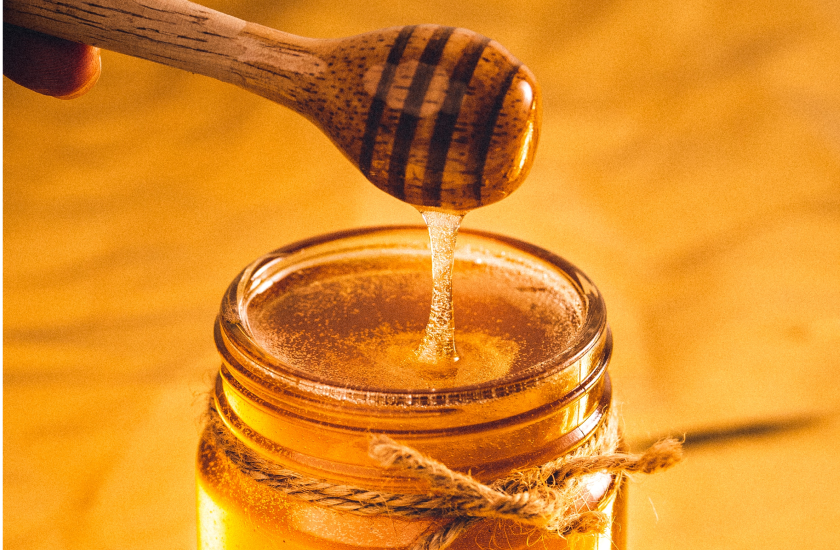Honey
-
Beefs
Beefs
-
Chicken
Chicken
-
Pork
Pork
-
Eggs
Eggs
-
Fish
Fish
-
Lamb
Lamb
-
Goat Meat
Goat Meat
-
Honey
Honey
-
Sea Food
Sea Food
-
Milk
Milk
-
Cheese
Cheese
-
Yogurt
Yogurt
Our Brochures
Contact Us
Social Media


Honey is a sweet and viscous substance made by several bees, the best-known of which are honey bees. Honey is made and stored to nourish bee colonies. Bees produce honey by gathering and then refining the sugary secretions of plants (primarily floral nectar) or the secretions of other insects, like the honeydew of aphids. This refinement takes place both within individual bees, through regurgitation and enzymatic activity, and during storage in the hive, through water evaporation that concentrates the honey’s sugars until it is thick and viscous.
Honey Characteristics
Honey bees stockpile honey in the hive. Within the hive is a structure made from wax called honeycomb. The honeycomb is made up of hundreds or thousands of hexagonal cells, into which the bees regurgitate honey for storage. Other honey-producing species of bee store the substance in different structures, such as the pots made of wax and resin used by the stingless bee.
Honey Production
Honey for human consumption is collected from wild bee colonies, or from the hives of domesticated bees. The honey produced by honey bees is the most familiar to humans, thanks to its worldwide commercial production and availability. The husbandry of bees is known as beekeeping or apiculture, with the cultivation of stingless bees usually referred to as meliponiculture.
Honey Structure and compositionHoney Characteristics
Honey is sweet because of its high concentrations of the monosaccharides fructose and glucose. It has about the same relative sweetness as sucrose (table sugar). One standard tablespoon (15 mL) of honey provides around 190 kilojoules (46 kilocalories) of food energy.
It has attractive chemical properties for baking and a distinctive flavor when used as a sweetener. Most microorganisms cannot grow in honey and sealed honey therefore does not spoil. Samples of honey discovered in archaeological contexts have proven edible even after thousands of years.
Because of its composition and chemical properties, honey is suitable for long-term storage, and is easily assimilated even after long preservation. Honey, and objects immersed in honey, have been preserved for centuries. The key to preservation is limiting access to humidity. In its cured state, honey has a sufficiently high sugar content to inhibit fermentation. If exposed to moist air, its hydrophilic properties pull moisture into the honey, eventually diluting it to the point that fermentation can begin.
Honey Production
The long shelf life of honey is attributed to an enzyme found in the stomach of bees. The bees mix glucose oxidase with expelled nectar they previously consumed, creating two byproducts – gluconic acid and hydrogen peroxide, which are partially responsible for honey acidity and suppression of bacterial growth.
Honey Nutriton
One hundred grams of honey provides about 1,270 kJ (304 kcal) of energy with no significant amounts of essential nutrients. Composed of 17% water and 82% carbohydrates, honey has low content of fat, dietary fiber, and protein. A mixture of sugars and other carbohydrates, honey is mainly fructose (about 38%) and glucose (about 32%), with remaining sugars including maltose, sucrose, and other complex carbohydrates. Its glycemic index ranges from 31 to 78, depending on the variety. The specific composition, color, aroma, and flavor of any batch of honey depend on the flowers foraged by bees that produced the honey.
The use of honey has been recommended as a temporary intervention for known or suspected button cell battery ingestions to reduce the risk and severity of injury to the esophagus caused by the battery prior to its removal. There is no evidence that honey is beneficial for treating cancer, although honey may be useful for controlling side effects of radiation therapy or chemotherapy used to treat cancer. Honey has a mild laxative effect which has been noted as being helpful in alleviating constipation and bloating.
